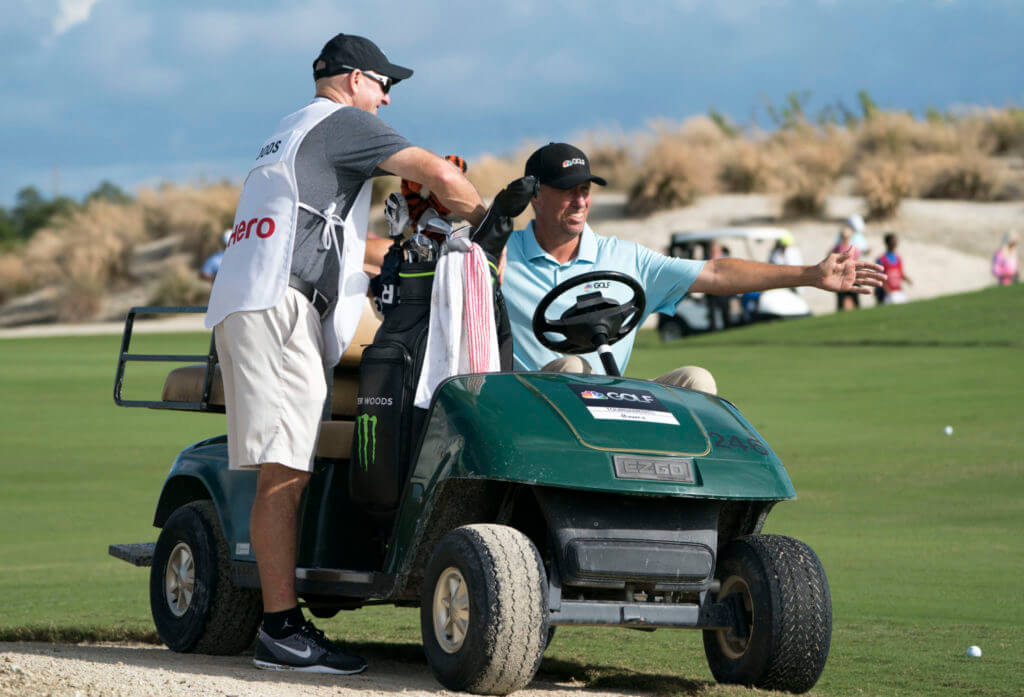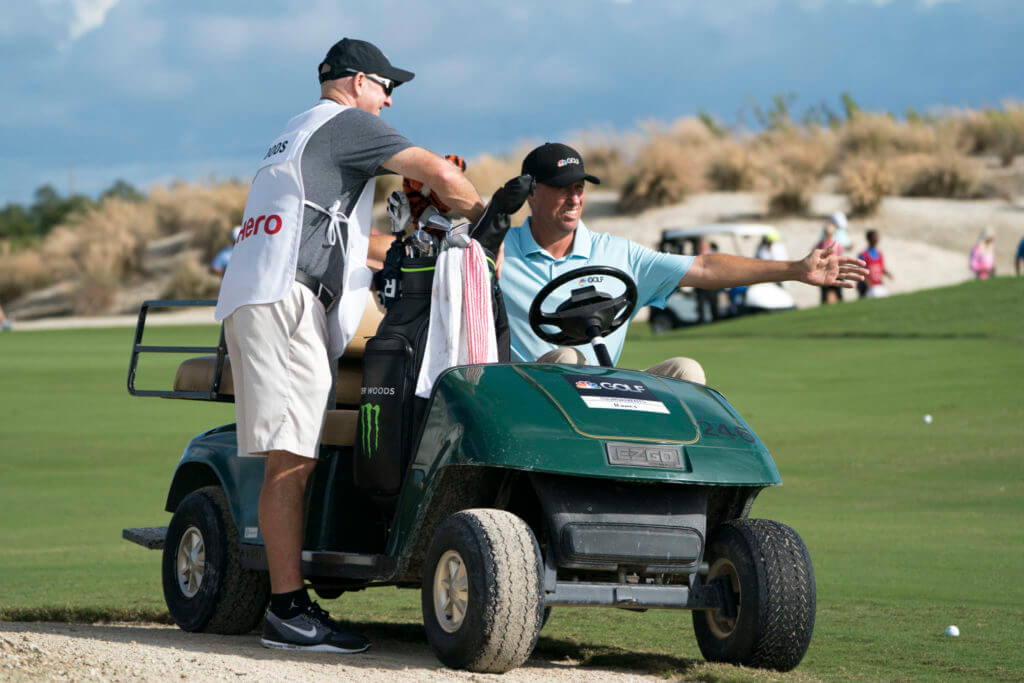
EDITOR’S NOTE: This story was originally published on July 10, 2018.
Joe LaCava and Jim Mackay were among the first people I met when I began covering the PGA Tour full-time in 1996. After 12 years of writing “mainstream” sports, I was immediately struck by the difference in cultures between, say, Major League Baseball and pro golf. Having Barry Bonds demand that you to perform an anatomical impossibility, or Frank Thomas treat you like a worm because you asked him for five minutes…
These are experiences they don’t teach you in journalism school. There had to be something more civilized. Otherwise, I might still be waiting tables for a living.
As it turned out, LaCava, who spent 17 years on Fred Couples’ bag and now works for Tiger Woods, lives about 35 minutes north of me in Connecticut, which allowed us to develop a friendship away from tour events. I’m probably one of a few people outside his wedding party who knows that Joe’s late father beat Couples in the golf outing on the morning of his son’s marriage.
RELATED: Meet the caddies | Tour caddie’s Twitter movement | Foster’s Tiger story
Such proximity allowed us to play an occasional round together. One afternoon at Yale, a beastly old Seth Raynor masterpiece, I was hitting the ball great but couldn’t make anything outside a few feet. Joe was busting me pretty good, but at just the right time, perhaps en route to the 11th or 12th tee, the professional caddie, who happened to be my partner, offered a game-changing observation.
“You’re missing everything to the right,” LaCava said. “Take the putter back a little slower and stroke it all the way through the ball.”
I distinctly remember us walking away with some cash that afternoon, which was the last reason Joe would show up to play 18 holes. He just wanted to have a good time and a few-dozen laughs, but in big tournaments with Couples, the ultra-gifted star with a wandering mind, it was all business. LaCava knew just how hard to push his guy without going overboard, providing focus and motivation without discouragement.
The results were obvious. Couples shed the enigma tag and became the world’s top-ranked player less than three years after hiring LaCava, who remains one of the sharpest guys and straightest shooters I’ve ever met. I doubt Woods considered anyone else to replace Steve Williams in 2011, and I’m not surprised LaCava spent the better part of four years on the sidelines while Tiger battled through health problems and personal issues. Such loyalty is a reflection of the man’s immense character.
Mackay, better known as “Bones” throughout his 25 years caddying for Phil Mickelson, is a different kind of guy. Introspective, not as outgoing as LaCava, with whom he is very close, a keen observer whose perceptive nature and attention to detail made him one of the best sources of information I’ve come across during my 3½ decades as a sportswriter.
LaCava was never much into dissecting the traits of other tour pros, even those he worked for. Bones had a scouting report in his head on just about everybody, including Couples, of whom he once said, “There are three or four guys out here who can play the entire 72 holes without mishitting a shot, and Fred’s one of them. His ability to put the clubface squarely on the ball is remarkable.”
A true student of the game. Mackay once told me that a lot of players struggled at the Masters because the texture of the fairways was so thin—Augusta National favored guys who picked the ball off the turf instead of taking big divots. The reason so many tour pros struggled on their first visit, he explained, was that lack of a lush surface. There was little room for error, particularly on uphill approach shots.
I had the privilege of playing twice with Bones over the years. One occurred the day after a British Open in the mid-2000s. Upon arriving at Kingsbarns, Mackay said he wasn’t going to actually tee it up himself—he wanted to caddie for me. I tried to change his mind in every way I could think of, but he insisted, so out we went.
Nine holes turned out to be plenty for both of us, but those two hours basically turned into a tutorial. Bones carried my bag, pointed out targets on virtually every shot, and most importantly, he read my putts. At Kingsbarns, where a herd of elephants seems to have been buried under every green, Mackay was just about flawless. He would divide a putt of any considerable distance into two or three parts. All I had to do was hit the damn thing.
That afternoon was a blast, although I must admit, I didn’t want anybody noticing that one of the world’s best caddies was shlepping the bag of some dude who probably didn’t break 45 that afternoon.
The one full round we played together happened the day after the 1999 Tour Championship in Atlanta. Danny Yates, the 1992 U.S. Mid-Amateur champion and a member of two Walker Cup teams, invited Mickelson and Mackay out to Peachtree GC, and they needed a fourth. I’m still not sure how I got the invite, but I wasn’t going to ask any questions about it, either.
My 5 handicap meant I got the big lefthander as a partner. Mickelson’s putter was colder than the hotel coffee, but he still shot 71 while talking in his own backswing at least once per hole. Bones, who was certainly a scratch golfer at the time, spent half the morning trying to fix my pathetic bunker game. To call it the coolest day ever would be a mild understatement.
You think Barry Bonds would ever teach me how to hit a slider?
All views expressed in this column are those of John Hawkins and do not necessarily reflect those of the Caddie Network.
